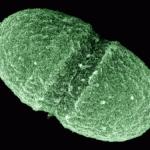
Australian women have a one in nine lifetime risk of developing breast cancer. Image: Shutterstock
The majority of women who have a family history of breast cancer have no genetic explanation for this predisposition.
Breast cancer is one of the most common cancers diagnosed in women, but only 20 per cent of these women are known to have a mutation in one of the genes currently associated with an increased risk of breast cancer.
An international team of scientists, led by researchers from the University of Melbourne, have identified a new gene, XRCC2, which is associated with an increased risk of developing breast cancer. “Mutations in XRCC2 explain another proportion of families with many cases of breast cancer in relatives,” lead researcher Professor Melissa Southey says.
The researchers identified a mutation in this gene in a few families with many cases of breast cancer. “These mutations were different mutations but they were all in XRCC2. This was very exciting but we needed further evidence.”
Scientists from the International Agency for Research on Cancer in France conducted a very large screen of this gene, using DNA from blood samples of 689 families with multiple members affected by breast cancer. They also took samples from 1,308 women who were affected by breast cancer at an early age, as well as 1,120 controls.
The mutations were only found in women who had had breast cancer, providing evidence that mutations in this gene increased the risk of breast cancer.
Mutations in XRCC2 are rare, which Southey said is not unexpected. “Research indicates that no single gene is likely to account for a large proportion of the remaining unexplained genetic susceptibility to breast cancer.
“We expect that many findings like XRCC2 will explain the majority of genetic breast cancer predisposition.”
This is also the first breast cancer risk gene to be discovered using a new genetic sequencing technology, known as massively parallel sequencing, which enables sequencing of large amounts of human DNA at high speed. The application of this technology will assist in future identifications, according to Southey.
“Due to these results and our methodology we believe that further breast cancer risk genes will be identified at a faster rate than before and potentially for other cancers such as colorectal and prostate cancers.”






